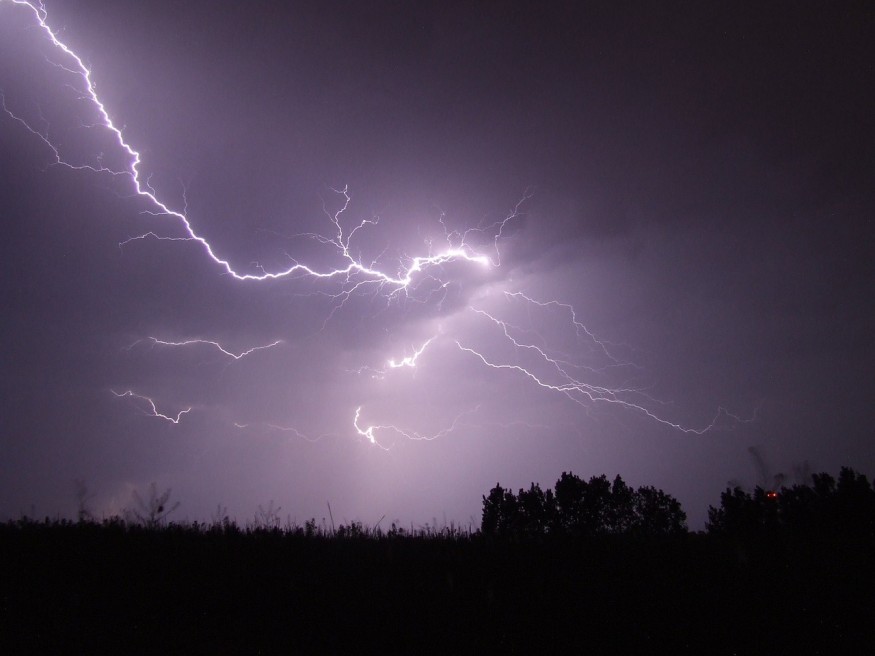In a groundbreaking achievement, researchers demonstrated the ability to manipulate storm lightning using a meticulously developed supercharged laser. The laser aims to divert lightning away from undesirable targets.

Using Laser as Rods To Deflect Lightning
A group of European scientists embarked on an ambitious endeavor to harness the immense power of lightning using a laser. Although their achievement was brief and resource-intensive, it offered a glimpse into the potential control over atmospheric forces.
Aurélien Houard, a research scientist at Switzerland's EPFL and the project's coordinator, explained in a blog post that the concept of using lasers as lightning rods date back to the early 1970s.
The underlying principle is relatively straightforward: exceptionally powerful laser beams can generate intense heat within the air, causing molecules to release their electrons. This process creates a channel saturated with charged electrons along the laser beam's path, which subsequently attracts lightning bolts, seeking the path of least resistance between the clouds and the ground.
However, the challenge lies in the ephemeral nature of this channel, as laser beams tend to flicker. While scientists had successfully deflected lightning in controlled laboratory settings, they had not yet replicated this feat under real-life storm conditions.
To overcome this hurdle, scientists developed a laser capable of emitting high-powered pulses at a rate of 1,000 times per second. This achievement was a collaborative effort involving the University of Geneva (UNIGE) and EPFL in Switzerland, the école Polytechnique in France, and the TRUMPF scientific lasers firm in Germany.
As per Houard, this laser's rapid pulsing, 100 times faster than their previous model, significantly increased the likelihood of capturing and manipulating lightning, according to Houard.
Bending Lightning for the First Time
Scientists transported a massive 3-ton laser to the summit of Mount Säntis, an elevation of 8,000 feet in Switzerland. The strategic advantage of this location was the presence of a 400-foot communications tower, which experienced approximately 100 lightning strikes each year. Whenever weather forecasts predicted thunderstorms, the laser was activated.
Ultimately, the researchers captured a natural lightning bolt that, for the very first time, followed the laser beam before striking the tower. The significance of this achievement was underscored by Jean-Pierre Wolf, a professor of applied physics at UNIGE, who stated that the image provided undeniable evidence of their success.
This groundbreaking discovery raises the prospect that lasers could one day offer an innovative means of protection against lightning strikes. Although Benjamin Franklin's lightning rods are currently the most effective protection method available, their coverage is limited to the height of the rod.
In contrast, lasers have the potential to reach higher into the clouds, increasing the radius of protection. The researchers found that the laser could extend the protective radius from 393 feet to 590 feet.
The next phase of this research involves the development of lasers capable of reaching even greater heights in the sky. While theoretically possible, this technology is likely a decade or more away from being refined enough for practical use in the market, as cautioned by Aurélien Houard, a key figure in the project.
The results of this pioneering research were published in January, showcasing the potential for lasers to serve as a protective measure against dangerous thunderstorms. Thunderstorms in the United States claim an average of 43 lives annually and result in nearly one billion dollars in insurance claims in 2022.
RELATED ARTICLE: High-Powered Laser Diverts Lightning Bolts Atop a Mountain in Switzerland, Deemed More Effective Than Existing Technology
Check out more news and information on Lightning in Science Times.
© 2025 ScienceTimes.com All rights reserved. Do not reproduce without permission. The window to the world of Science Times.












